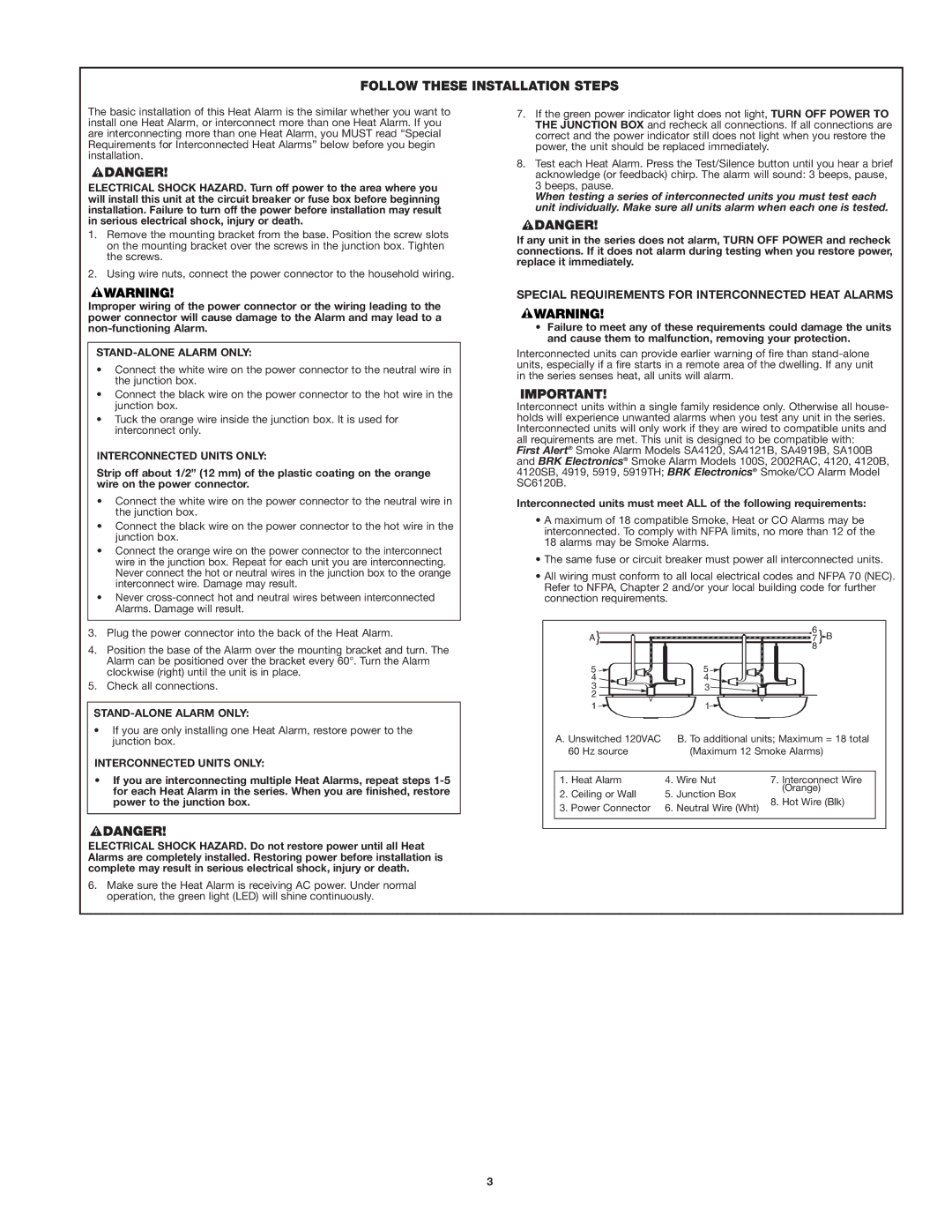HD6135FB specifications
The First Alert HD6135FB is a state-of-the-art smoke and carbon monoxide alarm that combines advanced technology with user-friendly features. Designed to provide peace of mind for homeowners, the HD6135FB offers reliable performance and comprehensive safety monitoring.One of its main features is the photoelectric sensor. This technology helps to reduce false alarms by quickly detecting smoldering fires that produce smoke without large flames. By distinguishing between different types of smoke, the HD6135FB minimizes unnecessary disruptions while still responding rapidly to genuine fire threats. Additionally, the unit includes an electrochemical CO sensor, which is highly sensitive in detecting carbon monoxide leaks, making it essential for safeguarding against this odorless and potentially deadly gas.
User convenience is prioritized in this model, as illustrated by its intuitive design. The First Alert HD6135FB comes equipped with a voice alarm feature, providing clear spoken warnings to alert homeowners to the specific danger—whether smoke or carbon monoxide. This audible notification ensures that residents can quickly respond to potential threats.
The device also boasts a battery-operated design, allowing for easy installation without the need for hardwiring. It is powered by lithium batteries, known for their long life, which reduces the frequency of battery changes. Additionally, the low battery chirp alerts users when it's time to replace the batteries, enhancing convenience and safety.
To make maintenance straightforward, this smoke and CO alarm includes a test/silence button. Homeowners can easily test the functionality of the device and silence false alarms with a single touch. Furthermore, the HD6135FB features a snap-on cover that streamlines battery replacements, minimizing the hassle associated with maintenance.
With its sleek design and compact profile, the First Alert HD6135FB is suitable for various home environments, easily blending with any decor. It is also equipped with an indicator light that provides a visual cue of the unit's operating status, ensuring residents are aware of its functionality at all times.
Overall, the First Alert HD6135FB represents a blend of cutting-edge technology, thoughtful design, and essential safety features, making it an excellent choice for homeowners committed to maintaining a safe living environment. Its integration of photoelectric and electrochemical sensors, along with user-friendly functionalities, establishes it as a reliable guardian against two of the most significant hazards in residential areas: fire and carbon monoxide.

